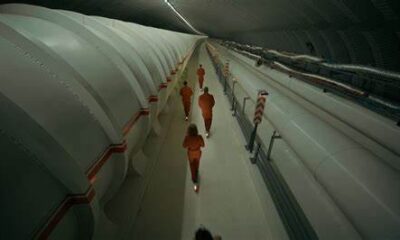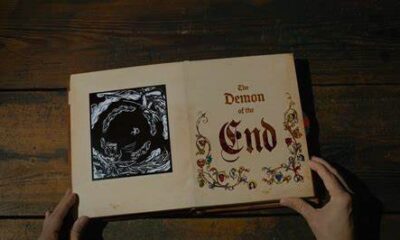
Notes from the Last Drive-In: S4E2 – ‘Black Sunday’ and ‘Def By Temptation’
Welcome to ‘Notes from the Last Drive-In’ where we cover season 4, episode 2 of The Last Drive-In with Joe Bob Briggs on Shudder. This week we are talking about the horror classics Black Sunday (1960) and Def By Temptation (1980) and how they related to… Walpurgisnacht? Okay then!
We are back after last week’s season four premiere and the 100th and 101st films shown at the drive-in. You know you’re in for a treat when Joe Bob has a cause and the maps come out. So how successfully do the night’s films mesh with the theme of European witch lore festivals? Let’s find out together, shall we?
Black Sunday (1960)
Black Sunday, or La Maschera del Demonio, is the landmark 1960 Italian horror film directed by icon Mario Bava, which also happened to be his directorial debut. The stars of the film include Barbara Steele, John Richardson, Andrea Checchi, Ivo Garrani, and Arturo Dominici. Of the cast, Steele would become the most familiar to Americans, though Richardson, Checchi, and Garrani would be very familiar to Italian audiences and Italian film enthusiasts.
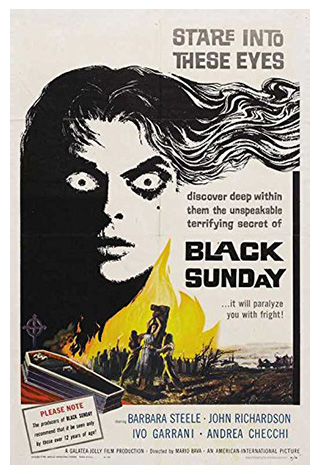
The film, very loosely adapted from the story “Viy” by Nicholai Gogol, is a lush, gothic fairy tale set in 1800s Moldavia about a land and a family cursed by a witch upon her death that would play out two centuries later. The film plays with multiple fairy tale themes and images and is unique in that it represents the foundations of post-war Italian horror, as Drive-In fans would come to learn throughout the night.
The story itself is very loose as a “Viy” adaptation goes, more or less borrowing tone above anything else. The narrative is simple with many scenes of melodrama, castle wanderings, and supernatural encounters that do not follow conventional logic. However, that is not necessarily a slight against the film. The events on the screen are like that of a dream. The film more or less meanders through the story to get to real meaty moments of witchy horror.
Barbara Steele owns the film in a dual role of the witch Asa Vajda and her descendent Katia Vajda. She is magnetic as Asa, a woman of erotic evil, and as her foil, the virginal and sweet Katia. The film would launch the English actress’ career as an Italian horror superstar, something she apparently had mixed feelings on. Regardless, she is the strongest performer in the cast, and that is saying something considering the work of other Italian cinema legends of the film, who are suitably game for what Bava throws at them.
As for Mario Bava, the film would serve as his debut as a director, having spent years as a cinematographer. His directorial work is a marvel here, and surprisingly modern given the influences of fairy tales and the gothic trappings of Hammer Horror that inspired the approach to the material. Between Bava and his camera, there is a sort of magic that unfolds on screen, and even today, over 60 years out, the film looks and feels astoundingly modern. Bava’s cinematographic eye does as much of the lifting of the film as Steele’s performance.
Joe Bob-servations on Black Sunday
Among some of Joe Bob Briggs’ observations on the film was a fascinating discussion on the nature of Black Sunday as a film for export. Specifically, the production company Galatea and their emphasis on genre films led to an explosion of sword-and-sandal flicks that proved moderately successful overseas, such as Hercules (1958) and Hercules Unchained (1959).
The issue, though, was that Italy did not really have a contemporary horror scene from which to draw. The history is of course tied into the years of fascism associated with Mussolini, which Joe Bob lays out. What we discover over the course of the film is how Black Sunday becomes the foundation of Italian horror and ends up leading to the staple of the Italian Giallo film.
This is, of course, between gags of a progressively hammered Joe Bob trying to bring back Walpurgisnacht. It was a fun night.
Final Thoughts on Black Sunday
While loose in structure and perhaps a bit too deep into the dream logic of fairy tales, Black Sunday is an iconic witch film and a foundational text in Italian horror. Between the direction and photographic eye of Mario Bava in his directorial debut, and the on-screen magnetism of actress Barabara Steele, there is something about Black Sunday that sticks with viewers. Joe Bob Briggs gave the film four stars. My hangups with the lack of focus and some pacing issues in the film leave me to give it four out of five Cthulhus.
 (4 / 5)
(4 / 5)
Best Line: “In life? What is my life? Sadness and grief. Something that destroys itself day by day, and no one can rebuild it. Here is the very image of my life. Look at it. It’s being consumed hour by hour like this garden, abandoned to a purposeless existence.” – Asa (a bit on the nose but she makes it work)
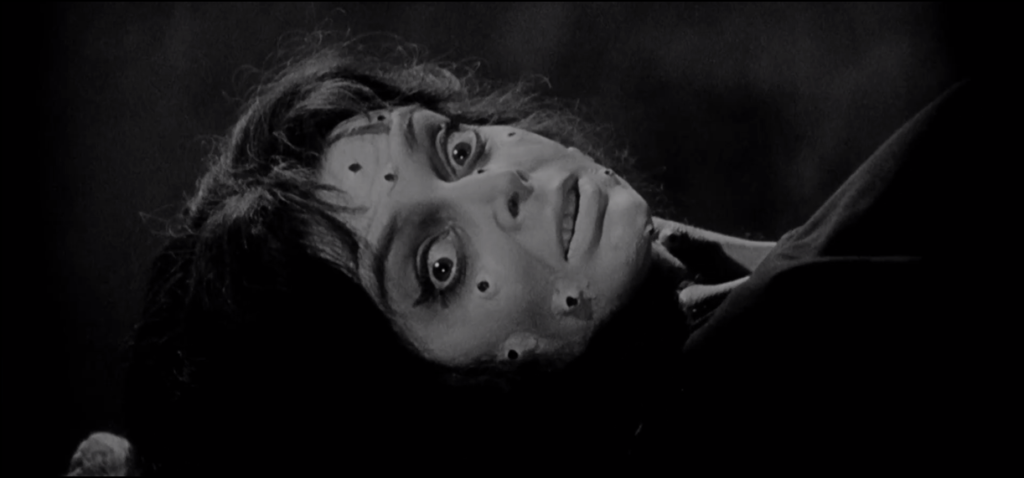
Def by Temptation (1990)
Def by Temptation is a fascinating 1990 black horror film starring and directed by James Bond III. The film also stars Kadeem Hardison, Bill Nunn, and Cynthia Bond with appearances by Samuel L. Jackson, Minnie Gentry, Melba Moore, and Freddie Jackson. Most of the cast would be associated with Spike Lee’s School Daze (1988) or the music management label Hush. The film would ultimately be distributed by Troma and even have Lloyd Kaufman help film the movie’s chaotic conclusion.
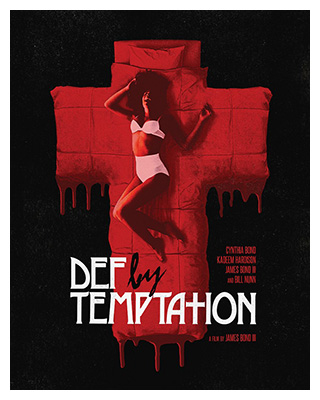
The film follows a group of men, a wannabe minister, an actor, and a cop, who find themselves involved with a succubus who is preying on black men on the streets of New York City. The late 1980s urban aesthetics and hip-hop and R&B score create a wonderful play on the vampire film.
Def by Temptation has a lot going for it. The story is well-paced and does a good job blending contemporary themes of masculinity with predation anxiety all wrapped up in a supernatural shell. The film does have inconsistencies with internal logic, but that doesn’t matter much when a succubus vampire is involved and a character gets Cronenberged into a television set. The film is fast and loose in borrowing from different themes and concepts and while that does result in a somewhat messy and scattershot story, the experience as a whole is quite memorable. A lot of that comes from Bond’s direction for what is clearly a passion project.
Part of the film’s appeal comes from the performances in which there is not a phoned-in performance in the cast. Each actor does their thing very, very well and can be praised for their timing, delivery, and presence. Some of these performances are so strong, however, that viewers may be shocked to discover that this film is one of the last films of two of the performers. James Bond III would quit acting and directing. He only recently resurfaced as a producer after 2009. Cynthia Bond, who is fantastic as the Temptress, would fill in a few television roles until about 1994, and would only resurface in the mid-2010s as the author of the best-selling book Ruby.
The film is gorgeous and among some of the best visuals in any film Troma has ever distributed. It helps that Spike Lee collaborator Ernest Dickerson served as cinematographer. His career would be substantial, with Def by Temptation being only one of many horror films in his filmography. As much as a cliche as this can sound, Dickerson’s framing and camera work turn the locations into characters themselves, be it a bar, apartment, street, or dream-like bedroom and jazz performance space.
Joe Bob-servations on Def by Temptation
If the theme of the night was witches, I would argue that Def By Temptation was a bit of a stretch. The Temptress of the film is more of a vampire or succubus than a witch, though she does bewitch men. It is a reflection of the loose rules established in the world. Regardless, it is a fun film and there was a lot to learn about it. Case in point, Joe Bob had a few things to say on the Troma-side of the film’s history, namely the fact that Lloyd Kaufman believes it to be the best film Troma ever distributed.
Another fun and surprisingly Troma-angle? Lloyd Kaufman himself picked up the camera to help film the chaotic ending as Dickerson had already moved on to another project.
Plenty of factoids were on hand as well, such as the strange case of Cynthia Bond who was a mystery to most of the cast. There were also other examples of the independent spirit running throughout the movie, such as the fact the apartment scenes were shot in the apartment of Laurence Fishburn, or that most of the funding of the film came from the cast and crew.
Final Thoughts on Def by Temptation
Def by Temptation is a fascinating movie that rides that line right between the 1980s and 1990s and should be considered a key text in black horror. The film may be inconsistent in its own rules and might be a patchwork of influences and excuses for gore, at times, but the film has some interesting things to say on the treatment of black bodies. The performances are well worth a mention as well, with every actor nailing their part. Joe Bob Briggs gave the film three-and-a-half stars. I found the film to be incredibly fun, so I’d give it four-out-of-five Cthulhus.
 (4 / 5)
(4 / 5)
Best Line: “Hey, baby, we had a good time – you can get an abortion now.” – Bartender
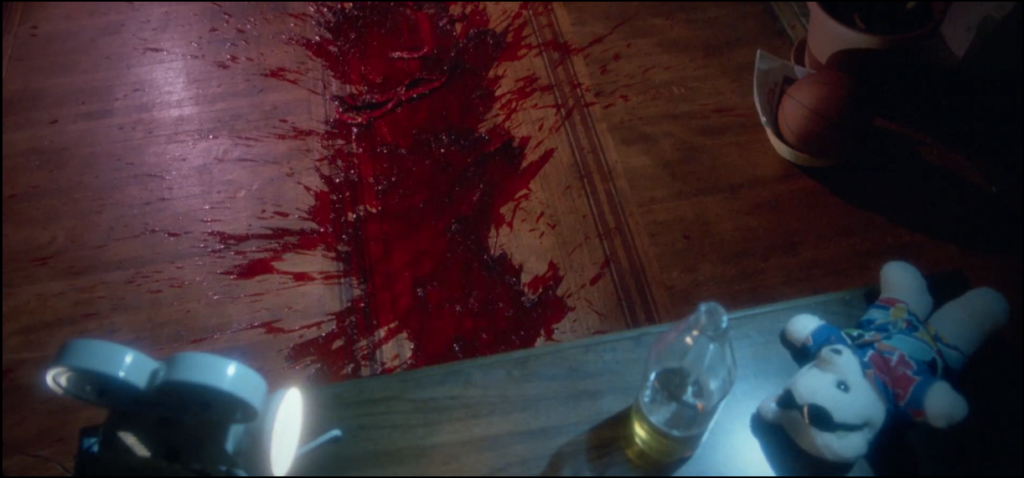
Haunted MTL Drive-In Totals
As always, here are the official Drive-In Totals.
As for our own totals, we have…
- 2 “Thee-Ate-Ers”
- 3 Types of Alcohol
- 3 Gilligan Cuts
- 8 Halloweens a Year
- 18 Beers
- Bat Shredding
- Orgy Proposing
- Cow Milking
- Tactical Sam Jackson Deployment
- Gratuitous European History Lessons
- Gratuitous Piano
- Gratuitous House Clattering
- Cane Fu
- Fainting Fu
- Binge Drinking Fu
- Banana Fu
- Darcy Cosplay: Asa
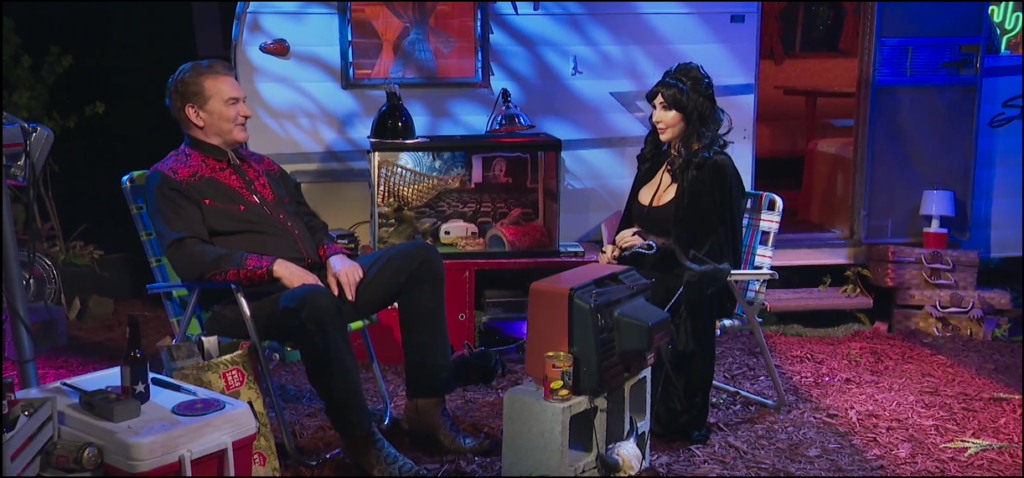
Episode Score for Notes from the Last Drive-In: S4E2 – Black Sunday and Def by Temptation
The theme of the night was, ostensibly about witchcraft, though there is a larger connection to demons given the origins of witchcraft which sort of explains how Def by Temptation fits in. What is important is that the wrapper for the show this week was one of the funnier and stranger ones the show has done, with Joe Bob sliding into a darker and darker drunken stupor as he tries to “bring back” Walpurgisnacht. The interplay between Joe Bob and Darcy was a great deal of fun, and with any “cause” our host takes one there was plenty of history involved.
With that being said, I do think the pairing was a bit stretched given the theme suggested by our host, here. I think the movies pair well, but in that regard, I think a stronger thematic hook would have been “dangerous women” rather than the return of Walpurgisnacht. There is an association between women and the festival, of course, but I just feel the execution here, as fun as it was, ended up a bit muddled.
Anyway, hopefully, they got Joe Bob’s stomach pumped after the combination of alcohol. You couldn’t pay me to drink mead.
 (4 / 5)
(4 / 5)
Please join us on Twitter next Friday as we live-tweet with the rest of the Mutant Fam during The Last Drive-In with Joe Bob Briggs. As always, thanks for reading, and please share your thoughts on the movies, the show, or even these reviews/recaps. We would love to know what you have to say.
Enjoyed Def by Temptation?
Want to add more Troma films to your library? Check out these sponsored links on Amazon. Buying through our sponsor link helps out Haunted MTL.
Movies n TV
Wheel of Time A Question of Crimson Is a Political Espionage Delight
Episode two of Wheel of Time felt like the beginning of a long journey. Stories are unfolding, lives are changing, and blood is spilling.
Let’s discuss.
The story
We begin this episode in the past with Elayne’s mother, Queen Morgase. It turns out her rise to the throne was a bit, shall we say, cutthroat. So when she shows up at the White Tower, Siuan is concerned.
She might have reason to be, too.
Meanwhile, Rand, Egwene, Moiraine, Lan and Aviendha are in the Spine of The World. As they travel through some of the most breathtaking lands I have ever seen on a TV show, Egwene is plagued with nightmares. We think at first that’s just her trauma working itself through her system. But we soon find out that it might not be that straightforward.
Finally, Perrin returns home to heal after his hand is almost cut in half. But when he gets there he finds the town has been infested by Children of The Light. And they’re looking for him.
What worked
There was something heartwarming in this episode about political espionage and choking religious persecution. And that is Elayne’s relationship with her family.
I have consumed a lot of fantasy content with royal families. And I have never once heard a princess call her mother ‘Mum’. I’ve never seen royal siblings get along. And I have sure as hell never seen a princess have a good relationship with her step-parent.
This was refreshing. Even though Queen Morgase is kind of a horrible person she seems like a good mother. And that’s an unexpected delight.
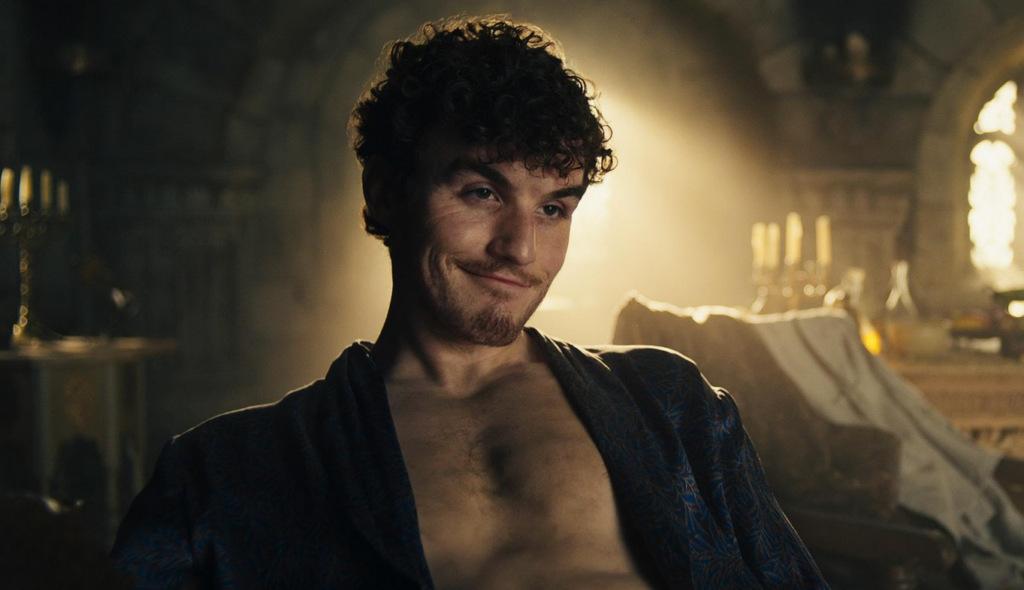
Of course, this is just one storyline among many. And while this can sometimes be overwhelming, in this case it wasn’t.
I’ll be honest, some of these storylines are going to drag for me. I know this because I’ve read some of the Wheel of Time books and I have an idea that not all the characters exactly pique my interest.
No one likes all the characters. No one likes all the storylines. While I am here for the political espionage between Queen Morgase and Siuan, not everyone likes it. While others might be fascinated with Selene trying to win Rand back, I couldn’t care less.
Having multiple storylines keeps everyone’s attention better. So long as things don’t get out of hand. Things can easily get out of hand. But this seems to be managed well.
So far.
What didn’t work
As I mentioned above, I’m not thrilled with Rand’s story at this point. And while it’s fine to not like a storyline when there are this many to choose from, it’s not fantastic that the one I like the least is the one involving our two main characters. And anytime we were with the team at the Spine of The World, the only thing that brought me joy was Moirain’s hat. It reminded me of Stockard Channing’s hat in Practical Magic.
The problem is that Rand is Charlie Brown with controversial magical powers. He is boring, serious, and pessimistic.
And yes, I understand that he has a heavy emotional burden and he’s the Dragon Reborn and that’s quite taxing and all. But let’s be fair, there isn’t a single person in this show that doesn’t have a heavy burden. And most of them manage to be fun occasionally.
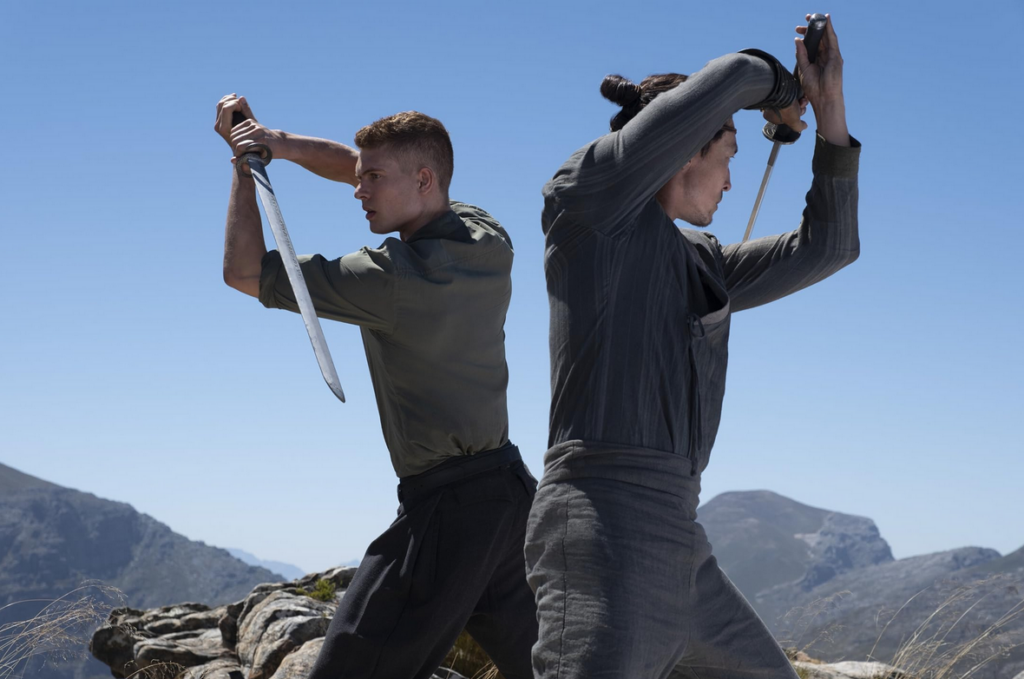
All that being said, this episode of Wheel of Time did exactly what it needed to do. It set up conflicts at each of the three locations. It established emotional ties between the characters and the events. And it established goals for everyone.
This was, in short, a solid episode. Not groundbreaking, not mind-blowing or life changing. It was simply good. It was entertaining and moved the plot forward.
Well done.
 (3.5 / 5)
(3.5 / 5)
Movies n TV
Wheel of Time Returns With A Bang
Wheel of Time is back for season three. There are mixed feelings regarding this. Last season, there were some serious pacing issues. And some serious sticking to the book’s storyline issues. But we’re two seasons in, and we don’t give up so easily. So let’s dive into episode one, To Race the Shadow.
By the way, I highly recommend watching this episode with the subtitles on. You’ll see why.
The story
We begin this episode with Liandrin facing a trial of sorts for her rampant betrayal. She does her best to gaslight her Aes Sedai sisters into thinking that Siuan Sanche is the real traitor.

When that doesn’t work, she reveals how many Black Aes Sedai have actually infiltrated the tower.
Spoiler, it’s a lot.
In the aftermath, our whole team gathers to drink and enjoy one night of relaxation before they head out to the Tear to form an army for Rand. All is going well until they’re attacked by myriad creatures and a sentient axe.
What worked
This episode was long. It had a run time of an hour and eleven minutes. And a lot of that run time was spent in heavy dialog scenes.
Fortunately, these were well-done scenes.
If you’re going to have a lot of talking scenes, there are good ways and bad ways to do it. Last season, we saw lots of examples of the bad way to do it. But this episode did it well. For one thing, other things were going on while conversations were taking place. The characters are drinking, playing games, walking through an interesting city. And the scenes themselves didn’t stretch out. They weren’t repetitive. We heard what the character had to say, then we moved on.
It was also nice that the point of these scenes wasn’t just info dumps. We had character development. We had romantic interactions. We had plot development and foreshadowing.
Overall, this episode felt like what it was. A moment of calm before a storm.
Taking a step back, I’d be remiss if I didn’t address the fight scene at the start of the episode. Because it was epic.
The magic looked amazing. The martial arts that went along with it looked fantastic. The costumes were beautiful. It was just incredibly fun to watch.
More than that, it was emotional. We lost some characters in that fight that were important. And it was clearly emotionally shattering for many of our characters, who found themselves betrayed by people they trusted.
So many of them.
It was a great way to open the season.
What didn’t work
Despite that, this episode wasn’t without its flaws.
First off, there were a lot of dialog scenes. And they were good scenes, as I’ve already discussed. But it was one after another after another. And when your episode is, again, an hour and eleven minutes, it’s maybe a little much to have so much chit-chat. Couldn’t some of these conversations, important as they were, have been moved to maybe another episode?
Finally, I want to talk about Egwene’s travel through the arches.
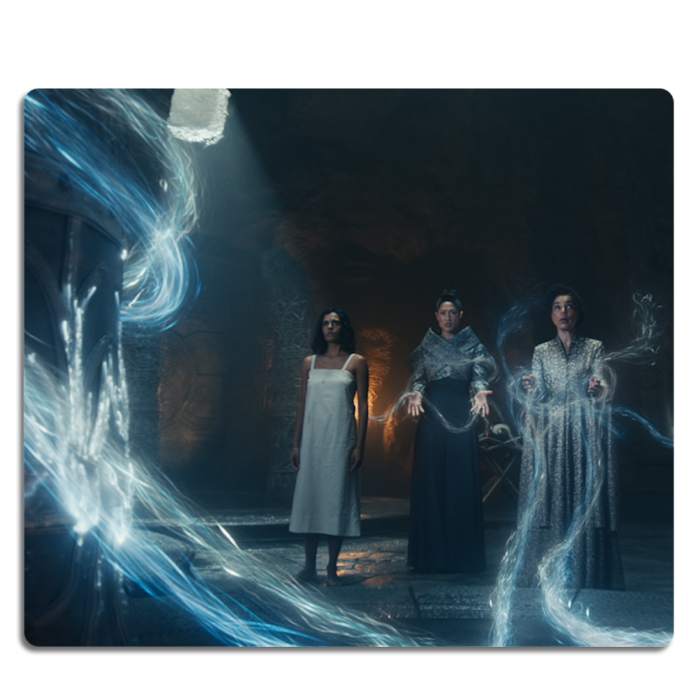
I feel like maybe there were some deleted scenes here. Because there must have been more to that visit than what we saw, right?
We could have seen Egwene battle Rand. That would have been badass and emotionally devastating. We could have seen her with a quiet life with Rand back home at the Two Rivers. We could have seen anything except for the quick clip of Rand in a bloody river, followed by Egwene being shoved back out in a bloody shift.
Bad job. But at least it wasn’t an extended scene of Moiraine collecting bathwater, and then taking a bath while looking sad. If we’d started this season with another scene like that, it might have broken my brain.
Amazon dropped the first three episodes at once. So we’ll be back soon to talk about episode two. See you then.
 (4 / 5)
(4 / 5)
Movies n TV
Entertaining as hell: Eight Legged Freaks (2002) Review
Early 2000s is a special era for the industry. It accepts the cheesiness and corniness of movie making, in turn producing some gems in their own right. Eight Legged Freaks starring David Arquette and young Scarlet Johanson is a horror comedy about giant spiders who overtake a small town. As crazy as that premise sounds, the movie surprisingly has a ton of heart and is super entertaining. Let’s review, shall we?
Plot
We start Eight Legged Freaks with a shot of toxic waste spilling into the water supply of Joshua, a spider farm owner. He is friends with Mike, one of our protagonists, who is a science geek and a spider enthusiast. Mike notices something quite right upon visiting Joshua, but no one takes him seriously. We are then introduced to the rest of the crew. Mike’s mother Samantha, the town sheriff, is too busy chasing Ashley, his sister, who is dating the town mayor’s son Bret (something Samantha does not approve of). We also have Chris, who returns to the town to save his father’s legacy in the town mines. He has opposition from Wade, Bret’s father, who wants to use the mines for his business ventures. Lots of drama going on that will only get juicier once the spiders get loose.
The creepy crawlies quickly dispose of Joshua and make their grand appearance after Ashley rejects Bret’s advances, abandoning him in the middle of a desert. A glorious chase sequence ensues as the spiders make their way towards the town, wreaking havoc on its residents. In a true horror fashion (which the movie acknowledges), it takes some convincing from Mike and then from Samantha for the town to take the threat seriously. The tongue-in-cheek style of narrative adds the comedy aspect to a movie that would otherwise burn out fairly quickly.
The remaining characters hide out in a shopping mall as it’s the only somewhat sturdy building in the area. This doesn’t last long as the spiders break in, forcing them to run through the mines. Their resources to fight the creepy crawlies off are limited as the methane gas doesn’t allow them to use firearms. Such conditions require resourceful thinking from Chris, who uses perfume to fend off the leader of the spider group and save himself during the climax of the movie.
Character dynamics are not forgotten once the action kicks in. We have Chris confessing his long-term feelings for Samantha which she knew all along, which provided some comedic relief. Bret also reunites with Ashley and apologises for being an asshole. Mike finally gets the appreciation he deserves as his knowledge saves the townsfolk more than once during the whole ordeal.
We end the movie with the town’s radio show person telling the story as an urban legend during his segment. This brings it into question – how much of it happened the way he said it did? We can only guess…
Overall thoughts
Eight Legged Freaks is a fun creature feature with some self-aware commentary on genre tropes that doesn’t take itself too seriously. The acting is good, the pacing fitting and the characters are likeable enough for you to want them to make it through. Definitely a must watch, if you don’t suffer from arachnophobia, that is.
 (5 / 5)
(5 / 5)


